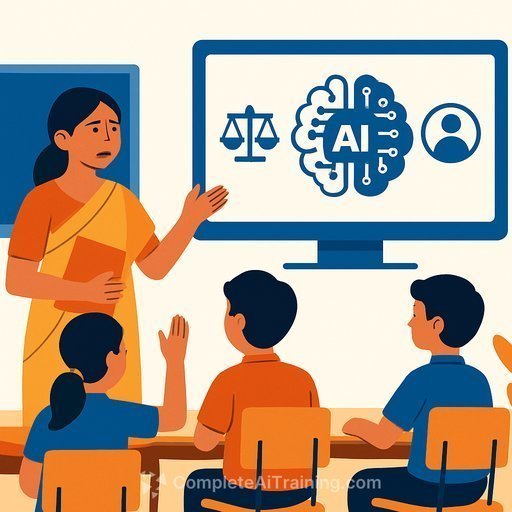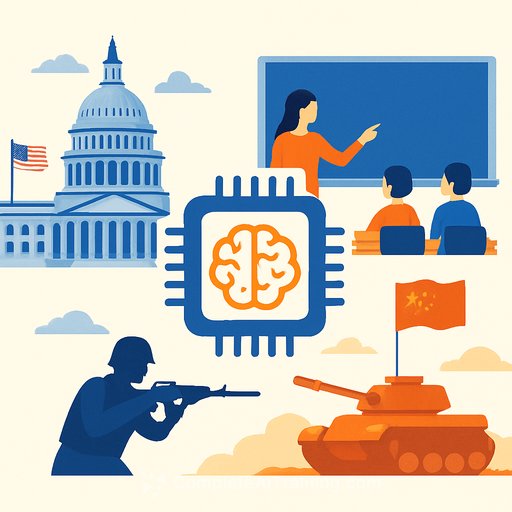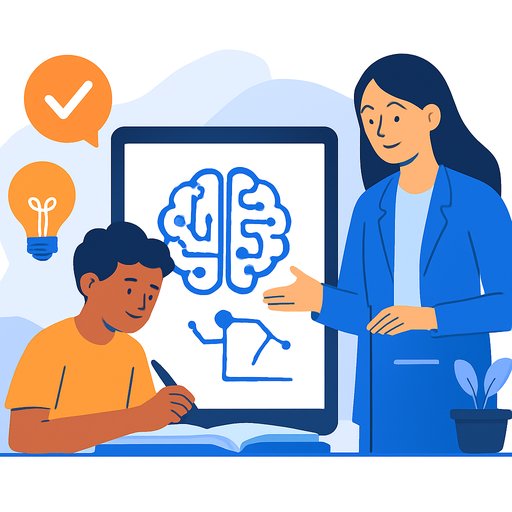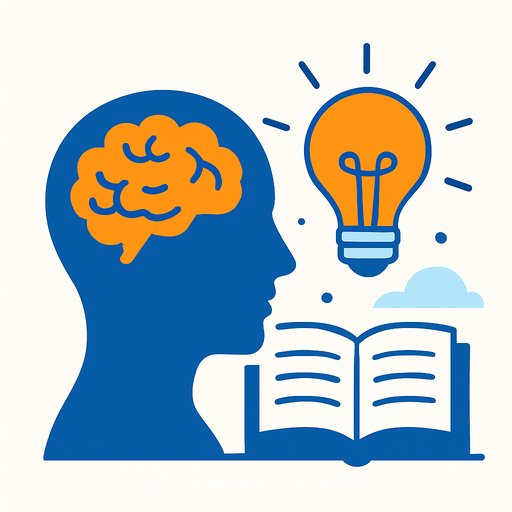India's AI Classrooms: Opportunity or Overexposure? Inside the plan to teach AI from Class 3
From the 2026-27 academic year, AI and computational thinking (CT) will enter Indian classrooms starting at class 3. The Ministry of Education says the move aligns with the NCF 2023 and NEP 2020 and aims to build digital literacy and 21st-century skills early.
It's a bold shift with clear upside. It also raises real questions for school leaders and HR teams: How do we train millions of teachers, protect student data, and ensure equal access so the benefits aren't limited to a few ZIP codes?
What's changing
Students as young as eight will learn what AI is, how machines learn, and why ethics matters. The early grades will use story-based, hands-on activities to build pattern recognition, logic, and data awareness.
"The inclusion of Artificial Intelligence and Computational Thinking (AI & CT) in the school curriculum from Grade 3 is a pioneering education milestone," said Awadhesh Kumar Jha, Principal, Kendriya Vidyalaya. Dr Bhavana Kulshrestha added that her school already runs AI from classes 1 to 10, signaling momentum on the ground.
A CBSE committee led by Karthik Raman (IIT Madras) is developing the curriculum. Teacher training content under NISHTHA is expected by December 2025.
The teacher capacity crunch
India has over a crore teachers. Many have limited exposure to AI tools, and that's the bottleneck. As AI expert Sakshar Duggal puts it: "At the foundational level, the emphasis shouldn't be on coding, but on cultivating the thinking behind it."
The Ministry has piloted AI for lesson planning and resources, training 10,000+ educators with partners like Intel, IBM, and NIELIT since 2019. Scaling that across diverse contexts is the real test. "Teacher readiness will decide whether AI in classrooms succeeds or stays confined to private schools," said Duggal.
Are we teaching AI too early?
Parents are split. "I'm proud my child will learn something new," said a parent from Gurugram. "But will early exposure make children too dependent on tools?" Another parent asked how learning data will be collected and secured.
National security expert Amit Dubey agrees privacy can't be an afterthought: "Any platform that collects student learning data should follow strict consent and anonymization norms." He adds: "The idea is to make children AI-literate, not AI-dependent."
Equity risk: widening or closing the gap?
Rural schools still struggle with devices, connectivity, and trained staff. That's why implementation must be outcome-based, not infrastructure-based.
"AI has the potential to bridge systemic divides," said Jaspreet Bindra. "But benchmarks must be outcome-based. Instead of counting coding labs, we must measure how effectively students develop problem-solving and reasoning skills, whether they're in Delhi or Dibrugarh."
Data and privacy: make it non-negotiable
AI in education runs on data generated by children. That makes governance a first-order priority, not a checkbox.
- Data protection strategies: Anonymize student data; encrypt in transit and at rest; restrict access; minimize collection to what's necessary.
- Legal obligations: Comply with India's Digital Personal Data Protection Act (DPDP); map overlaps with global norms like GDPR and FERPA for vendors and cross-border tools.
- Parental transparency and consent: Explain what is collected and why; obtain specific permissions; set clear breach protocols and audit trails.
Or as Duggal frames it: privacy by design, not an afterthought.
What learning will look like
- Classes 3-5: Story-based activities to introduce pattern recognition, simple classification, and object identification. Ethics through age-appropriate scenarios.
- Classes 6-8: Basic data handling, logic puzzles, bias and fairness discussions, and responsible use of AI tools for projects.
- Classes 9-12: Applied AI use cases, data projects, creative builds, and deeper debates on safety, consent, and societal impact.
Dubey is clear: teach how AI works; don't try to turn 10-year-olds into data scientists.
Playbook for school leaders and HR
- Run an audit in 30 days: Devices, connectivity, teacher skill levels, and current digital policies.
- Nominate "AI champions" per department: 5-10% of teachers who pilot and coach peers.
- Adopt an offline-first stack: Favor tools that work with limited bandwidth and shared devices.
- Create a PD pathway: Micro-modules on CT, prompt craft, classroom ethics, and data basics; 10-15 hours per term.
- Set classroom guardrails: Clear use cases, banned use, citation norms, and age-appropriate tool lists.
- De-risk data: No student PII in external tools; vendor DPAs; annual security reviews; role-based access.
- Parent engagement: Consent workflows, plain-language data notices, and quarterly Q&A sessions.
- Pilot, then scale: Start with two grades, one term; document what worked; expand.
- Support teacher well-being: Keep screen time balanced; protect planning periods; celebrate small wins.
How to measure success over 3-5 years
- Thinking skills: Growth in abstraction, decomposition, patterning (rubrics and performance tasks).
- Ethical reasoning: Student ability to spot bias, articulate consent, and propose safer alternatives.
- Transfer: Application of CT to non-tech subjects (math, language, social science projects).
- Teacher practice: Percentage using AI to plan lessons, differentiate work, and provide feedback.
- Equity: Comparable outcomes across school types and regions, not device counts.
- Data stewardship: Zero high-severity incidents; audit compliance; parent trust scores.
As Bindra notes, "AI literacy isn't about rote knowledge." Duggal adds, the impact shows in thinking, creativity, ethics, and digital awareness, more than marks.
Budget and partnerships
- Pool resources: Device sharing labs; district-level content hubs; community contributions via Vidyanjali.
- Leverage open tools: Favor free or low-cost options with offline modes and clear data terms.
- CSR and state missions: Tie requests to measurable outcomes, not hardware counts.
- Micro-credentials: Incentivize teachers with badges and progression linked to PD hours and classroom practice.
Parents: support with balance
Parents broadly support AI as a skill, with reasonable worries about dependence on screens and fairness of access. "AI integration cannot replace teachers - it can only assist them," said Jha. Human judgment, empathy, and creativity stay central.
Keep the focus on curiosity, reasoning, and responsibility. That's how you get confident, ethical users - not tool addicts.
Useful resources
- Digital Personal Data Protection Act, 2023 (official PDF)
- National Education Policy 2020 (Ministry of Education)
Bottom line: teach AI as a mindset - curiosity, ethics, and practical problem-solving. Get teacher readiness right, treat data with care, measure outcomes fairly, and this initiative can build responsible digital citizens at scale.
Your membership also unlocks:










